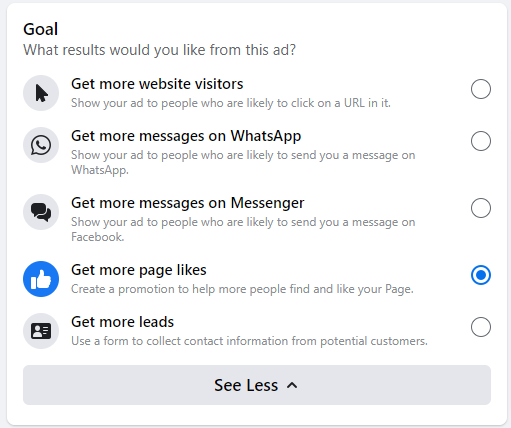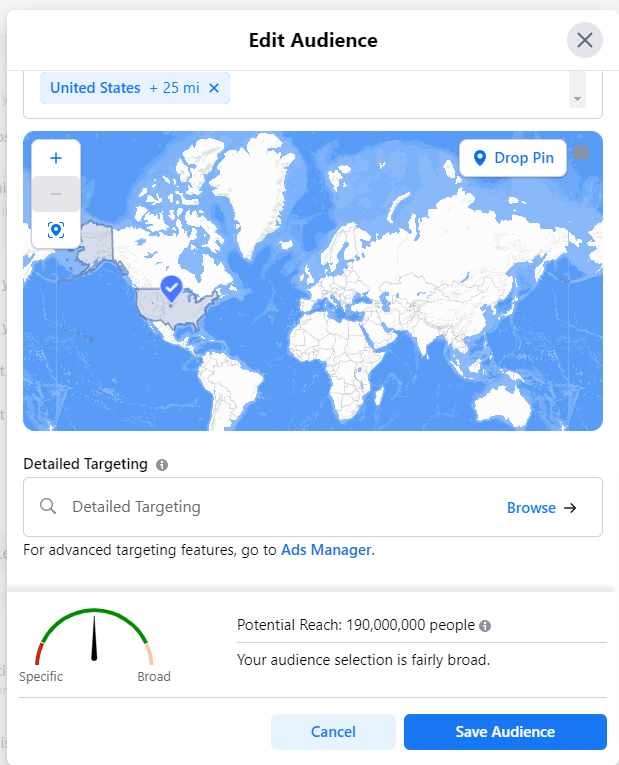In today’s digital world, failing to participate in social media hurts small business owners. Research shows there are 4.48 billion social media users worldwide today, representing nearly 57% of the entire population.
Social media for small businesses is more important than ever before. With more people turning to social media to learn about companies and products, small businesses can easily use social media marketing to increase brand awareness and grow their customer base.
Even with a limited budget, social media can support business goals. The key is to invest resources into social media platforms and promotions that will resonate with your target customers.
In this article
- 1. Identify Your Target Audience
- 2. Audit Your Social Media Accounts
- 3. Set SMART Goals
- 4. Choose Your Promotion Strategies
- 5. Build Your Social Media Strategy
- 6. Develop a Social Media Calendar
- 7. Create and Post Content
- 8. Engage with Your Audience
- 9. Cross-Promote on Other Social Media Platforms
- 10. Use Analytics Tools to Measure Performance
- 11. Start Developing Your Social Media Promotions
1. Identify Your Target Audience
Before you can be successful on any social media platform, you must know who your target audience is. This information makes it easier to know which social media platforms you should establish a presence on.
In the beginning, there was really only Facebook and Twitter. Now, there’s also LinkedIn, Pinterest, Instagram, Snapchat, TikTok, and many others. It’s simply too much to expect a business to be active everywhere, all the time. Even if you have an entire marketing team behind you, it’s still more content to create and more to manage.
You’re far better off sticking with the top two or three networks where your audience is most active. If you try to be everywhere at once, you won’t have enough resources to do well on the channels that matter.
Knowing who your target customers are will make it much easier to pick the right social media platforms for your brand. If you’re not targeting teens and young adults, it’s safe to say you can avoid Snapchat and TikTok. If you’re targeting a B2B audience, you’ll definitely need to be on LinkedIn.
2. Audit Your Social Media Accounts
If your small business is already using social media, you’ll need to audit what’s there to set your benchmarks. During a social media audit, you’ll review your current metrics to assess your growth up to this point. You’ll also look for opportunities and think about what you can do to improve your social media presence.
You’ll need:
- Profile information: Name and URL
- Audience demographics: Age, gender, location, device type, etc.
- Publishing metrics: How many posts did you publish? How often? What days of the week? What times of the day?
- Engagement metrics: How many likes, comments, shares are on each post?
- Channel specific metrics: Add the data that is specific to each social media platform.
- Referral traffic: How much traffic did you get to your website from each social media channel?
If your business hasn’t started using social media yet, you can skip this step for now. You’ll come back to do an audit once you’ve started seeing the results of your social media strategy.
Use the time you’d have spent on a social media audit to set up and optimize your profiles.
3. Set SMART Goals
Before you can develop a social media strategy, you must first have goals in mind. Ideally, your social media goals should support your overall business goals.
A SMART goal is one that is:
- Specific: Think of this as your mission statement. It should include the who, what, when, where, and why. “Grow Facebook following” is more specific than “grow social media following.”
- Measurable: How will you determine if you met the goal? Include what you’ll use to measure progress.
- Achievable/Attainable: Don’t set an impossible standard. If you’re trying to lose weight, the idea of losing 20 pounds in a month isn’t achievable. It has to be something that someone can actually do.
- Relevant/Realistic: The goal should relate to your small business. Your personal weight loss goal, for instance, doesn’t have anything to do with your company.
- Time-Bound: Without a time limit, there’s no pressure or sense of urgency about reaching the goal. There needs to be some kind of timeframe associated with your goal.
For example, your SMART goal could be:
Within the next three months, we will grow our Facebook following by 20%.
The goal is specific because you’re talking about your Facebook following. You’ll measure it with the change in the number of people who like your Facebook page. You have a time limit. It’s attainable because you have three months to grow your following. If you’ve only got 100 followers right now, you’ll accomplish the goal when you add 20 new followers.
4. Choose Your Promotion Strategies
With your goals in mind, it’s easier to figure out what you’ll do to accomplish them. There’s no shortage of social media content ideas to help you either start or improve your social media. You’ll create a variety of content around each of these promotion strategies for the duration of your campaign.
PPC Ad Campaigns
If you’ve got an advertising budget, using PPC ads on Facebook, Twitter, and other social media networks is a great way to grow your following. You can build ads specifically targeting your ideal audience members, with the goal of getting them to follow your page.


Referral Promotion
With a referral promotion, you’re asking followers to refer their friends and family to your company. This can be as customers or new social media followers. In either case, what you post will show up in your customers’ feed. If someone mentions their friends, those people will see, too.
Exclusive Coupons and Discounts
Offering a coupon for free shipping, or a price discount exclusively to your Facebook or Twitter followers is a great way to promote. People are more likely to engage with you when they know the discount isn’t shared anywhere else.
If you decide to run this promotion on two social media platforms at once, create a different promo code for each. Then, see which platform got the best response by tracking code usage.
Contests
Contests one of the most popular social media marketing strategies. But not just any contest will work. For best results, you need to create contests for your target customers. If your goal is to grow more followers or drive more website traffic that matches your ideal persona, the prize, theme, and verbiage must speak to the specific segments.
For instance, if you’re a small business owner trying to get more visitors to your e-commerce website that sells boating accessories, offer a prize that benefits your ideal customer. This could be a boat cleaning supplies kit, a fish finder, or an audio link system. Your target consumer, in this case, would be new boat owners.
By strategically choosing the segment you want to focus on, there’s a much better chance of growing your sales and engagement over the long term.
What kinds of contests can your brand use?
- Hashtag contests: Great for Instagram and building awareness of brand hashtags
- Photo or video contests: Need to build up some user-generated content for use in your marketing materials? Try this.
- Vote to win: Have users submit photos or videos of your products/services in use. The person with the most votes wins a prize.
- Turn your contest into a game: Need to generate more leads? Create a game. Ask users to enter their contact information to notify them of the winner.
In 2013, M&M’s USA launched a campaign to help promote the pretzel M&M that launched in 2010. It was a game that had people find the pretzel in a sea of M&Ms. There was no prize at the end, of course, but ultimately the brand got 25K new likes on their Facebook page. It also got 6K shares and 10K comments.

In 2018, Marvel Studios did an Instagram hashtag contest to celebrate their 10th anniversary. Prizes included a trip to see the Avengers Infinity War premiere, visit the Captain Marvel set, and more.


Other considerations as you build contests:
- Allow for multiple entries
- Encourage people to share the contest with their friends to get more entries
- Add images and video where possible. For example, post a video where you tell users about your company, the contest, and the prize.
- Partner with influencers and other brands to help expand your reach.
- Leverage features of each individual social network to promote your contest.
Giveaways
Like contests, giveaways are an excellent way for small businesses to grow brand awareness. The key is to choose a product or service that’s related to what you offer.
Giveaways are the ideal choice when you don’t have much of an existing following to leverage user-generated content. In this situation, you can do a refer-a-friend style approach. This helps grow your following and engagement.
With tools like Woorise, creating and managing your contests and giveaways is simple. We’ve also great ideas to help you promote your giveaway or contest.
Re-Targeting Campaigns
If someone visits a certain page on your website but doesn’t convert, you can use retargeting to catch them while they’re browsing Facebook, Instagram, or Twitter. Install the Facebook Pixel on your website to collect data about your website visitors that you can use in your Facebook Ad campaigns. Use Twitter’s website tag to collect information you can use for retargeting on that platform.

5. Build Your Social Media Strategy
Knowing what promotion tactics you’ll use, develop your full social media strategy. Include the specific strategy you’ll use for each social media platform. When you have mapped out the strategy for all of the platforms you’ll use, you’re ready to start executing.
The content you post on each network is based on form and context. The form refers to how the information is presented: text, links, video, or images. The context is based on your company voice and the specific platform you’re posting on.
Does your content need to be funny? Serious? Incredibly detailed? Educational? Something else entirely?
You don’t want to post so much you annoy your audience. That translates to a lot of people unfollowing you. But, you don’t want to post so little that your fans forget you. Or that the platform’s algorithms stop showing your content to large portions of your audience.
You’ll likely need to do a bit of testing to figure things out for yourself since your audience is unique.
Your social media strategy should include details like:
- Your business goals and marketing objectives
- Customer personas for each of your audience segments
- Competitive research
- Your channels and tactics
- The type of content you’ll post
- The time you’ll post
- How frequently you’ll post
- Budget and resources
- Roles: Who on your team is doing what? If you don’t have an in-house social media marketing team, you’ll need to hire marketing freelancers to help you.
6. Develop a Social Media Calendar
Use the social media strategy to build out a full social media calendar. The calendar details exactly what you’ll post and when. Setup a monthly and weekly view. You can find a variety of templates to use, as well as social media management tools to make calendar creation easier. Social media tools are ideal for teams who need to collaborate.
Categories and Category Placement
Start by building out your categories. Common options include:
- Blog posts
- Reshares of curated content
- Conversation starters
- Images and Video
- Promotional content
- Tips
- Quotes
- Company Announcements
- Events
With your categories mapped out, determine when you’ll share them. If you’re posting Monday-Friday, you may decide to share blog posts Monday, Tuesday, and Wednesday. Share quotes on Thursday, and Tips every Friday.
Once you know what you’re posting and how often you’ll post content in each category, it’s time to build out your updates.
Not sure what kind of content you should create for your posts? Take a peek at what your competitors are doing on their social media account. You don’t want to copy them, of course, but you can take notes on the types of posts and content that get the most engagement. Then, put your own spin on things.
Leave room in your calendar for special events, such as:
- Holidays: Especially silly non-official holidays, bonus points if they’re related to your industry. Did you know September 19th is Talk Like a Pirate Day? Use websites like Holiday Insights and History’s “This Day in History” section to help you.
- Announcements: Did you recently hit a milestone? Maybe your 1,000th social media follower, your business anniversary? Hire new staff? Make announcements to share those successes with the world. Want to boost sales? Share a discount.
- Product/Service Launches: Have new products or services to share with customers and prospects? Shout it from the rooftops. Don’t be afraid to post several teasers leading up to the event. Also, consider taking pre-sales to boost revenue before the official launch day.
- Meet-Ups: Does your company host local events? Share them with your audience so you can meet and greet with your prospects.
7. Create and Post Content
Using your calendar as a guide, Develop a plan for all the content you’ll be sharing over the next few months. It’s a good idea to write out as many updates as you can, for all of your categories.
Depending on the social media strategies you’re using, you may be creating multiple types of content, such as:
- Written statuses: Questions, product updates, etc.
- Links: Content on your own blog, content from other sources with your own commentary.
- Video content: Product demos, behind-the-scenes tours, etc.
- Graphics, photos, and memes: Create your own with a tool like Canva or Crello.
- Surveys: Not only do surveys help you find out more about your target audience, but they can also be a fun way to generate engagement. Make it short and sweet. Leave it running for a limited amount of time. Compile the data into a blog post, which then you can then share later.
- Quizzes: Did you know that “Buzzfeed quizzes” is one of the most popular search terms? Want a fun and easy way to build brand awareness? Create a quiz related to your industry and share it on social media. For example, if your small business sells kitchen gadgets and tools, you could create quizzes like: “What cuisine are you?” or “What dessert are you?” Use quiz results data to get audience insights just like you would with surveys. With tools like Woorise, you don’t have to hire an expert developer to create surveys or quizzes for you.
Once the content is created, it’s time to start posting it in accordance with your strategy and calendar. Thanks to the various social media management tools available on the market today, you don’t have to be online all the time.
You can load the content up and schedule it in advance. You can use a lot of the same content across all your social media channels.
But, for best results, adjust the content slightly to meet the needs of each social media platform. Posting the exact same thing on Facebook and Twitter isn’t ideal, since the networks have different styles and different audiences.
Once it goes live, you’ll be ready to interact with your audience.
8. Engage with Your Audience
One of the most effective ways to boost engagement is to actually take the time to interact with your followers. When someone comments on your posts, reply to them. Even if they don’t ask you a question, take the time to say thank you.
As your audience grows, some of that engagement may be in the form of moderating comments. That doesn’t mean removing negative reviews or comments that speak poorly of your business. It means making sure that followers aren’t posting content that doesn’t align with your brand values.
If you do get a negative comment, it’s much better to respond to it with grace and offer to take the conversation offline than it is to delete it. People know you can’t keep 100% of your audience 100% happy all the time. They’d much rather see a polite response than nothing but praise. This at least lets them know that you’re willing to address customer service issues.
9. Cross-Promote on Other Social Media Platforms
Chances are that many people who follow you on Facebook also use Instagram. And many people who use Twitter also use other social platforms. One of the simplest ways to build brand recognition is to occasionally share updates reminding your followers about your other social media accounts.
There’s no need to be shy about asking internet users to follow you on more than one social media channel. You can keep it simple with a link to the other social profile and a call to action to ask people to follow you there.
If you want a more subtle option, use your social media profile bio to mention your presence on other networks.
10. Use Analytics Tools to Measure Performance
Each of your social media channels has built-in analytics. This information tells you about your audience and engagement. You’ll be able to comb through the data to spot trends.
Maybe the posts that were posted later in the day got more engagement. Maybe more of your following is active at a different time of day than you originally scheduled your content. How did your video content do? Maybe you need to play with the length of the videos or make sure there are subtitles.
Use the information in these tools to adjust your approach. Testing and experimenting help you to fine-tune your approach. You may find that your followers are in a slightly different demographic than you anticipated. Work with what you’ve got.
11. Start Developing Your Social Media Promotions
Social media for small business will take some trial and error before you find what works best for you and your audience. Don’t be afraid to adjust promotions and test again.
If something doesn’t work right away, that doesn’t mean it’s time to completely remove it from your social media strategy. It just means you need to make some adjustments before you try again.



